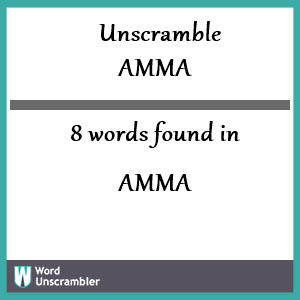


) = ಅಮ್ಮ 2 - 6 2) any of several intestinal diseases cholera ಅಮ್ಮನವರ / ಅಮ್ಮಾವರ ಗಂಡ ammanavara/ammāvara gaṇḍa a man ruled by his wife a hen-pecked husband ಅಮ್ಮನವರು ammanavaru a respectful term for a mistress ಅಮ್ಮನವರ ಪ್ರಸಾದ ammanavara prasāda (n. Closeley related to Sanskrit, both languages are used interchangeably between religions.Īmma in Kannada glossary Source: Alar: Kannada-English corpusġ) (obs.) a male parent a father.Ģ) (obsel.) a general suffix to male names.ģ) a mode of addressing a man with endearment.Ĥ) a term used to show one’s dejection, disapproval etc.ġ) a woman who has borne a child a woman as she is related to her child or children a mother.Ģ) a general suffix to female names.ģ) a mode of respect in addressing a woman.Ĥ) a term of endearment in addressing a girl.Ħ) (dial.) the goddess of fishermen or boatmen.ħ) an acute, highly contagious virus disease characterised by prolonged fever, vomiting, and pustular eruptions that often leave pitted scars or pockmarks, when healed small pox.Ĩ) (dial.) the mother of a one’s father or mother a grand mother.ĩ) (a very general term) a woman 10) ಅಮ್ಮನಬೇನೆ ammana bēne (n. Pali is the language of the Tipiṭaka, which is the sacred canon of Theravāda Buddhism and contains much of the Buddha’s speech. ‹-› (2) in general when addressing a woman familiarly = good woman, my (good) lady, dear, thus to a woman J.I, 292 PvA.63 DhA.II, 44 to a girl PvA.6 to a daughter DhA.II, 48 III, 172. of ammā) endearing term, used (1) by children in addressing their mother = mammy, mother dear D.I, 93 J.II, 133 IV, 1, 281 (amma tāta uṭṭhetha daddy, mammy, get up!) DhA.II, 87 PvA.73, 74. amita father’s sister & amāre to love) mother J.III, 392 (Gen. Source: Sutta: The Pali Text Society's Pali-English DictionaryĪmmā, (f.) (onomat. (Vocative amma is often used to address a girl or a daughter). Ancient India enjoyed religious freedom and encourages the path of Dharma, a concept common to Buddhism, Hinduism, and Jainism.Īmma in Pali glossary Source: BuddhaSasana: Concise Pali-English DictionaryĪmmā : (f.) mother. The history of India traces the identification of countries, villages, towns and other regions of India, as well as royal dynasties, rulers, tribes, local festivities and traditions and regional languages. Note: amma is defined in the “Indian epigraphical glossary” as it can be found on ancient inscriptions commonly written in Sanskrit, Prakrit or Dravidian languages. Source: Cologne Digital Sanskrit Dictionaries: Indian Epigraphical GlossaryĪmma.-(EI 24), literally ‘the mother’ a village goddess. It records the gift, at the instance of a feudatory chief named Kākatya Guṇḍyana, of the village of Māṅgallu in favour of a Brāhmaṇa named Dommana. These copper plates (mentioning Amma) were dug up somewhere in the Nandigama Taluk, Krishna District. Amma II is stated to have been born with a tissue round his neck which resembled a kaṇṭhikā (ornament for the neck), and crowned at the express request of all people., This seems to indicate that, though but a boy, Amma II was chosen as king in preference to his half-brother Dānārṇava who was the elder of the two. He was then twelve years of age, and he had been crowned four years earlier. 13, Friday, corresponding to the 5th December 945 A.D. His accession took place in Śaka 867, Mārgaśīrṣa ba. In 945 A.D Amma II (Vijayāditya VI), the son of Cālukya Bhīma III by Lokāmbikā, came to the throne. 945 A.D.) or Ammarāja II (also known as Vijayāditya VI) is the name of an ancient king mentioned in the “Māṅgallu grant of Amma II” (c. Amma in India history glossary Source: What is India: Epigraphia Indica volume XXXI (1955-56)Īmma II (r.


 0 kommentar(er)
0 kommentar(er)
